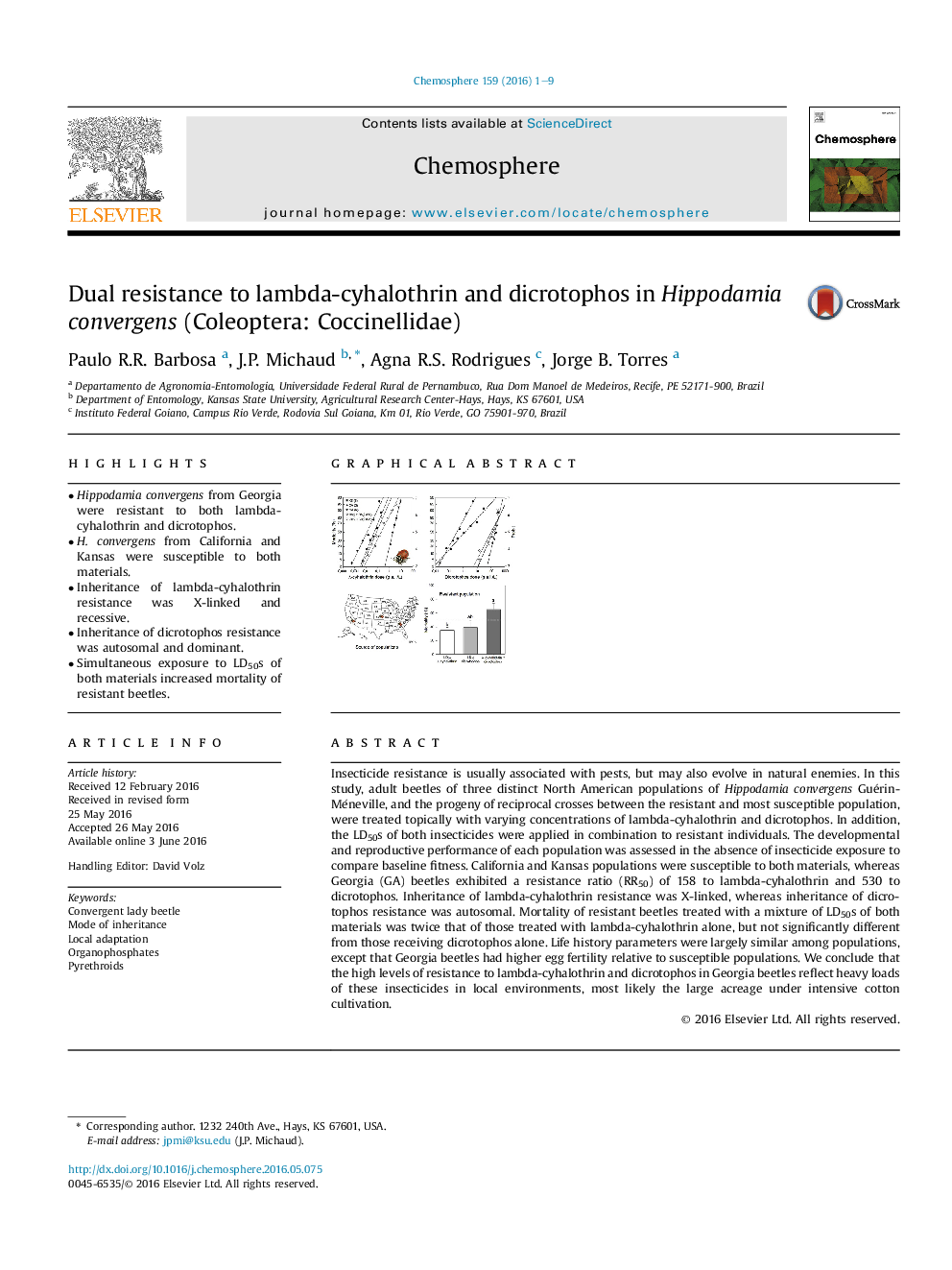| کد مقاله | کد نشریه | سال انتشار | مقاله انگلیسی | نسخه تمام متن |
|---|---|---|---|---|
| 4407436 | 1618812 | 2016 | 9 صفحه PDF | دانلود رایگان |

• Hippodamia convergens from Georgia were resistant to both lambda-cyhalothrin and dicrotophos.
• H. convergens from California and Kansas were susceptible to both materials.
• Inheritance of lambda-cyhalothrin resistance was X-linked and recessive.
• Inheritance of dicrotophos resistance was autosomal and dominant.
• Simultaneous exposure to LD50s of both materials increased mortality of resistant beetles.
Insecticide resistance is usually associated with pests, but may also evolve in natural enemies. In this study, adult beetles of three distinct North American populations of Hippodamia convergens Guérin-Méneville, and the progeny of reciprocal crosses between the resistant and most susceptible population, were treated topically with varying concentrations of lambda-cyhalothrin and dicrotophos. In addition, the LD50s of both insecticides were applied in combination to resistant individuals. The developmental and reproductive performance of each population was assessed in the absence of insecticide exposure to compare baseline fitness. California and Kansas populations were susceptible to both materials, whereas Georgia (GA) beetles exhibited a resistance ratio (RR50) of 158 to lambda-cyhalothrin and 530 to dicrotophos. Inheritance of lambda-cyhalothrin resistance was X-linked, whereas inheritance of dicrotophos resistance was autosomal. Mortality of resistant beetles treated with a mixture of LD50s of both materials was twice that of those treated with lambda-cyhalothrin alone, but not significantly different from those receiving dicrotophos alone. Life history parameters were largely similar among populations, except that Georgia beetles had higher egg fertility relative to susceptible populations. We conclude that the high levels of resistance to lambda-cyhalothrin and dicrotophos in Georgia beetles reflect heavy loads of these insecticides in local environments, most likely the large acreage under intensive cotton cultivation.
Figure optionsDownload as PowerPoint slide
Journal: Chemosphere - Volume 159, September 2016, Pages 1–9